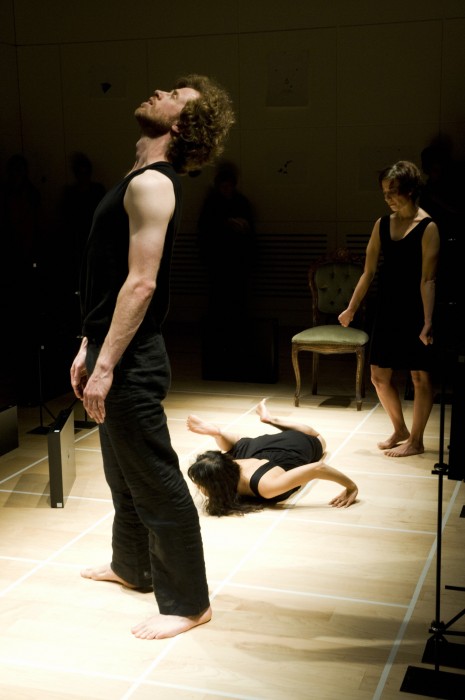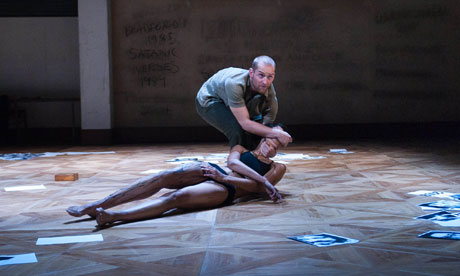On Saturday I saw two very different performances that made me think about choreography and control.
In the afternoon, I spent some time at a piece called Stilled, a durational dance piece from Fevered Sleep.
Inspired by the scientific process of X-ray Crystallography, Fevered Sleep’s most delicate piece for adults weaves together dance, light, music and photography to create a meditative cross-artform event exploring perception, movement and stillness.
Accompanied by a live sound and light score, the piece is performed for both for a human audience and for a bank of silent, all-seeing pinhole cameras. Throughout the performance, images are exposed, developed and displayed, to show glimpses of bodies moving slowly in the light. Each image bears witness to dances that have already been and gone, durations of time captured in a single image.Stilled is a meditation on the nature of perception: of taking time to become visible, taking time to be present, taking time to look, and taking time to see.
There were four sensitive dancers in the work but also the choreographer/director David Harradine who entered the performance structure to arrange pin hole cameras that captured diffuse images of the performance.
I thought about the choreographer’s role in the work when I watched DV8’s Can we talk about this? at the National that same evening. Can we talk about this? is deliberately challenging. It ‘deals with freedom of speech, censorship and Islam’ building a picture of religiously sanctioned intolerance that liberal western values are too tolerant to challenge. The performers address the audience directly, rarely relating to one another on the stage. There’s a virtuoso quality in their ability to speak complex text while dancing often complex movement patterns. I was moved by sequences such as Joy Constantinides delivery of MP Ann Cryer’s words about honour killings, while Joy balanced a tea cup and saucer as she was manoeuvred through a series of delicate balances by one of the other dancers.
However, there was a tension for me in the work: it seemed to be critical of a religious fascism that controls bodies and minds and yet this superbly executed work relies on a choreographic process that has strictly controlled those dancing bodies on stage. There is no room for surprise in the performance. Everything is thoroughly determined. And in that control I sense the choreographer, Lloyd Newson.
While Harradine exerts control in Stilled, moving the pin hole cameras to determine how the work is viewed, at its heart the work is improvised and even the technology of the pin hole camera is imprecise producing images that are impressionistic, uncertain. Moreover, Harradine allows us to see his intervention. He enters the space and becomes a performer. He makes himself vulnerable to the audience’s interpretative gaze.
Not so Newson whose precise controlling vision is all pervasive in his work. In the programme, Newson talks about how joining a DV8 production being like joining a religion but without God. Maybe there is a god, and it’s the choreographer? Ironically in a work that is critical of dogma, the choreographer’s dogma is what creates such a specific, polished performance. It’s not a work that needs much of me except to receive its message.
With Stilled, however, I felt the invitation to participate, indeed had to suppress the urge to join the dance. It’s a different way to choreograph, a different relationship with the audience, a different set of values. Stilled and Can we talk about this? are both successful accomplished works for me.
But I know which approach communicates the world as I experience it and would like it to be.




Post a Comment